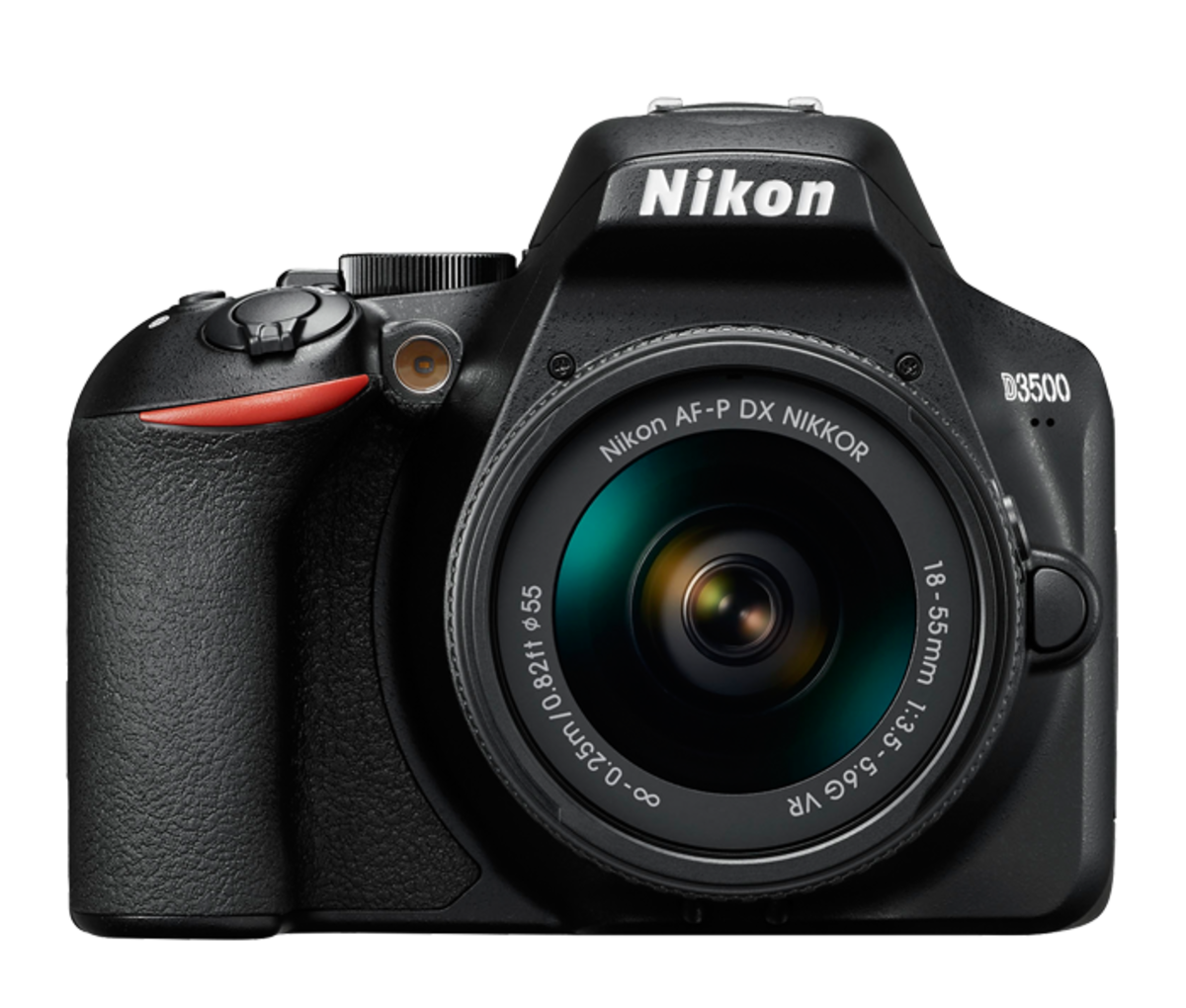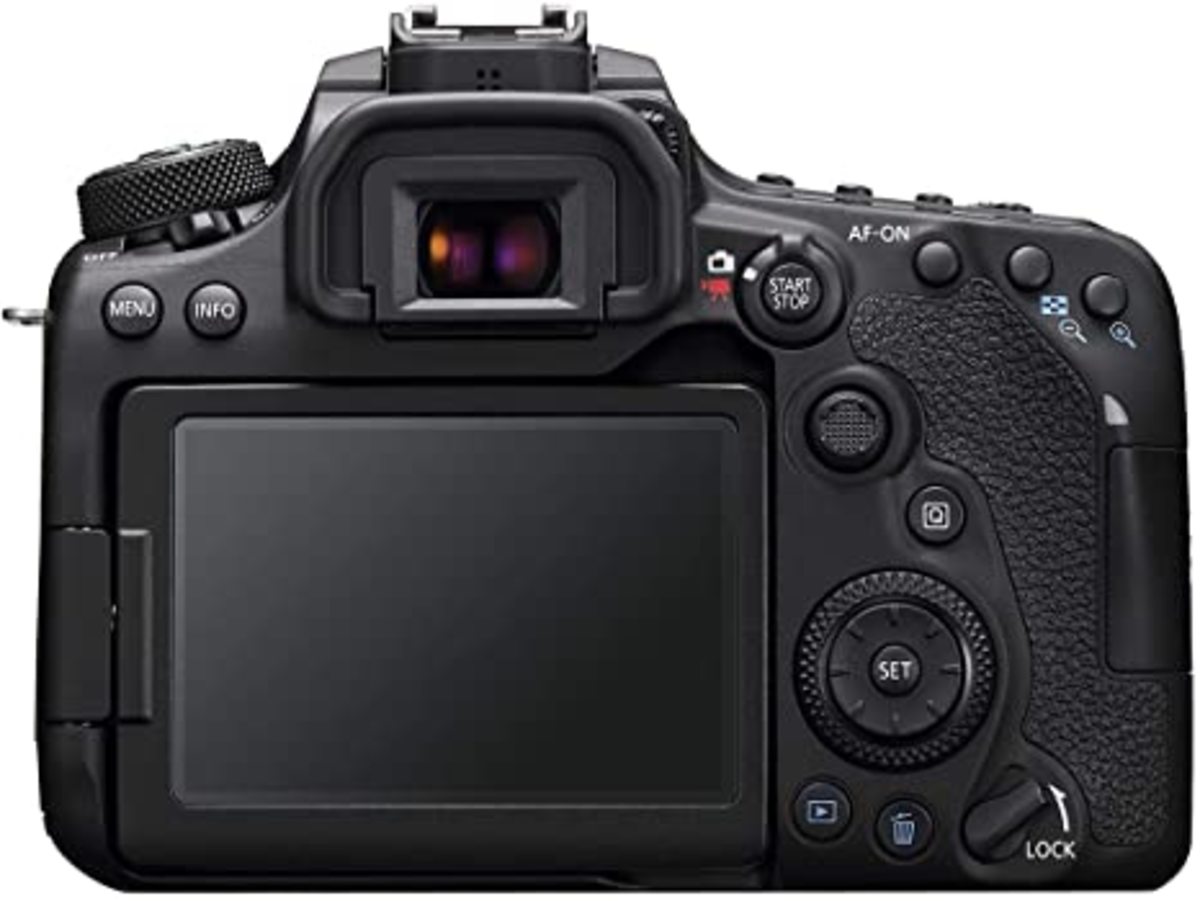What is the best entry-level DSLR available right now? Nikon D3500. It includes everything a novice photographer needs, including a convenient “Guide Mode” that explains key settings, has wonderful handling, a vast array of lenses, and good image quality. The Canon EOS Rebel SL3/250D/200D Mark II is a superb alternative at a comparable price. Or, for those with a bigger budget, the 2020-released Canon EOS Rebel T8i / Canon EOS 850D. It’s worth noting that the manufacturers have discontinued the models.
1. Nikon D3500
This is arguably the best overall DSLR for beginners. Even though Nikon hasn’t introduced any new entry-level DSLRs in quite some time, the D3500 continues to be a fantastic choice for people who are just beginning their photographic journey. This camera continues on from where the D3400 left off, but with a number of additional advantages and benefits. The battery life is the primary benefit, in contrast to the power consumption of mirrorless devices. It can take more than 1,500 pictures before requiring another charge, which is significantly longer than the majority of comparable DSLR cameras. In our evaluations, the 24 megapixel sensor also produces images of exceptional quality.
2. Canon EOS 90D
A versatile all-purpose option that comes packed with features and leaves you with plenty of room to advance. It is possible that the Canon EOS 90D will be the very last enthusiast-level DSLR that the industry ever produces; if this is the case, then it will go out with a bang. The adaptable Canon EOS 90D features a high-resolution sensor that, when combined with the Digic 8 imaging engine, creates the tantalizing possibility of shooting uncropped 4K video at 30 frames per second. It comes with a brand new metering system with 216 zones that reduces noise in photos. The camera also comes with a larger grip making it feel incredibly comfortable in hands. Additionally, it had a joystick that makes it easy to select between the Dual Pixel CMOS AF point options. When it comes to battery a single charge of the battery allows for at least 1,500 images to be taken, which is another advantage of this camera. There is no question that this camera offers a great deal of space for improvement, despite the fact that it may have a few too many features and functions for someone who is just starting out. In either case, the Canon EOS 90D demonstrates that there is still a significant market for DSLRs in the world of mirrorless cameras.
3. Nikon D5600
For those looking for a little more power, the D5600 may be the camera for you. The D5600 is an upgrade from the models in Nikon’s D3000-series and features a more robust set of specifications in order to compete with cameras such as the Canon EOS Rebel T8i and EOS 850D. Wi-Fi and a good range of additional control on the inside are two of the key advantages that the D7500 has over the D3500. Other advantages include a large touchscreen that has an articulating design that folds round to the front and is suitable to vlogging. The photographs produced by its 24.2 megapixel sensor are incredibly detailed and do not fail to wow. In point of fact, despite the fact that the D5600 is an older camera, it is highly unlikely that you will require an upgrade to a full-frame camera in order to achieve superior results. The 39-point autofocus system is adequate, despite being a little on the older side, and combined with the D5600’s refined handling, it provides for a well-rounded entry-level DSLR. It is necessary to spend a little bit more for the privilege, but if you feel like you might need a little bit more room to expand in the future, it makes sense to opt for the D5600 because it will be a trustworthy friend for many years to come.
4. Canon EOS Rebel T100 / EOS 4000D / EOS 3000D
A beginner’s camera that is really simple but is nonetheless quite reasonably priced. The Canon EOS 4000D, which is also known as the Canon EOS 3000D in some areas, is a good initial choice if you’re searching for something that’s really simple but very economical. The 4000D appears to be somewhat out of date when compared to the most recent versions that are in the entry-level price range. The 18-megapixel sensor and the DIGIC 4+ processor are both getting on in years, as is the relatively simple 9-point focusing system that has been listed in Canon’s product catalogue since 2009. The LCD display, which has a diagonal of 2.7 inches and a resolution of 230 thousand dots, also appears to be getting on in years, and we found the performance of the Live View mode to be a little bit slow. Finally, the polycarbonate shell has a feel that is consistent with its low cost. There are an impressive 500 photos per charge from the battery. Even more crucially, the image quality is satisfactory, with noise being dealt with in an acceptable manner. Those who upgrade from a smartphone or compact camera should find the results to be satisfactory. There is a respectable quantity of detail and a high level of saturation, and the Picture Style presets make it simple to make adjustments to the tonal range. For more seasoned purchasers, the 4000D will feel like taking a step back in time due to its use of more dated components and performance that is mediocre. However, if cost is the most important factor for you, you might be able to look past the product’s limited feature set and find some more wallet-friendly options.
5. Canon EOS Rebel T8i / Canon EOS 850D
This is the best premium DSLR for beginners. The Canon EOS Rebel T8i (also known as the EOS 850D in countries other than the United States) is the successor of the extremely popular Canon EOS 800D (also known as the Rebel T7i). The most obvious feature to this new model is a 4K video mode. This new model is not a significant upgrade overall. Despite this, the Canon EOS Rebel T8i/850D continues to be one of our top picks for an all-around DSLR for beginning photographers. It has a Dual Pixel phase-detection AF system. Additionally, the arrangement of its buttons has been given a lot of careful thought, and the LCD screen can be viewed from a variety of angles. As long as you ignore the headline of 4K video, which requires a crop and the loss of phase-detection autofocus, it continues to be an excellent choice for anyone who is beginning a photography hobby and values DSLR advantages such as battery life and handling more than the most recent mirrorless cameras.
6. Canon EOS Rebel SL3 / 250D / 200D Mark II
If you are on a budget, this is the best DSLR for beginners. Although it is not Canon’s least expensive DSLR, the EOS Rebel SL3 (also known as the 250D and 200D Mark II in countries other than the United States) is, in our opinion, the digital camera that provides the finest combination of features, performance, and value currently available. To begin, it is the digital single-lens reflex camera (DSLR) that is the smallest and lightest while also having a screen that can be articulated. This means that it is not as intimidatingly enormous as some of its competitors. In addition to this, it improves upon its Rebel SL2 (EOS 200D) predecessor by incorporating a new processing engine as well as the capability to record 4K video. It boasts a touchscreen that is highly sensitive, a quick start-up time, and a great Dual Pixel CMOS AF system, all of which operate when you are filming 1080p video (though not sadly in 4K). Those who enjoy shooting sports or action should go elsewhere for a camera because its burst shooting rate of 5 frames per second is unable to compete with that of the most recent mirrorless cameras. If you can manage to pay a little bit more, though, the Canon EOS Rebel SL3 / EOS 250D makes a little bit more sense than the company’s other super-budget DSLRs, such as the Canon EOS Rebel T100 (also known as the Canon EOS 4000D / EOS 3000D). This is our opinion. This content reflects the personal opinions of the author. It is accurate and true to the best of the author’s knowledge and should not be substituted for impartial fact or advice in legal, political, or personal matters.





